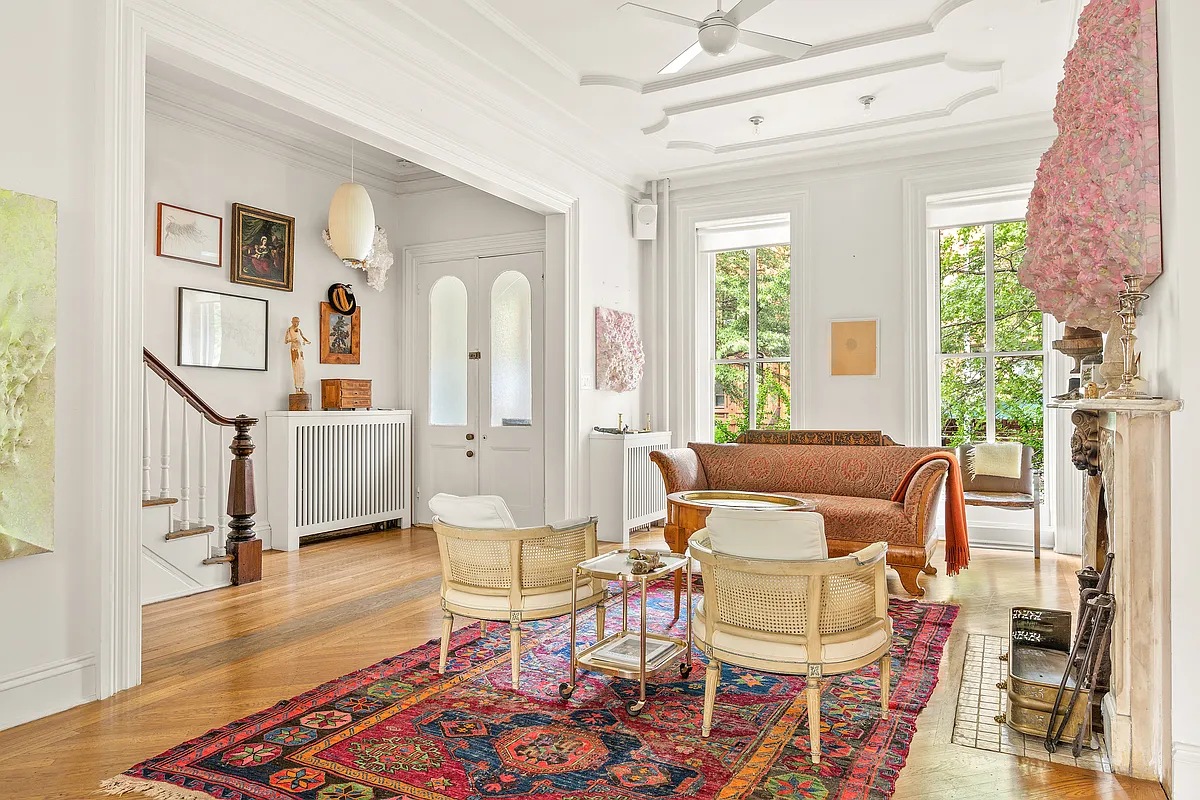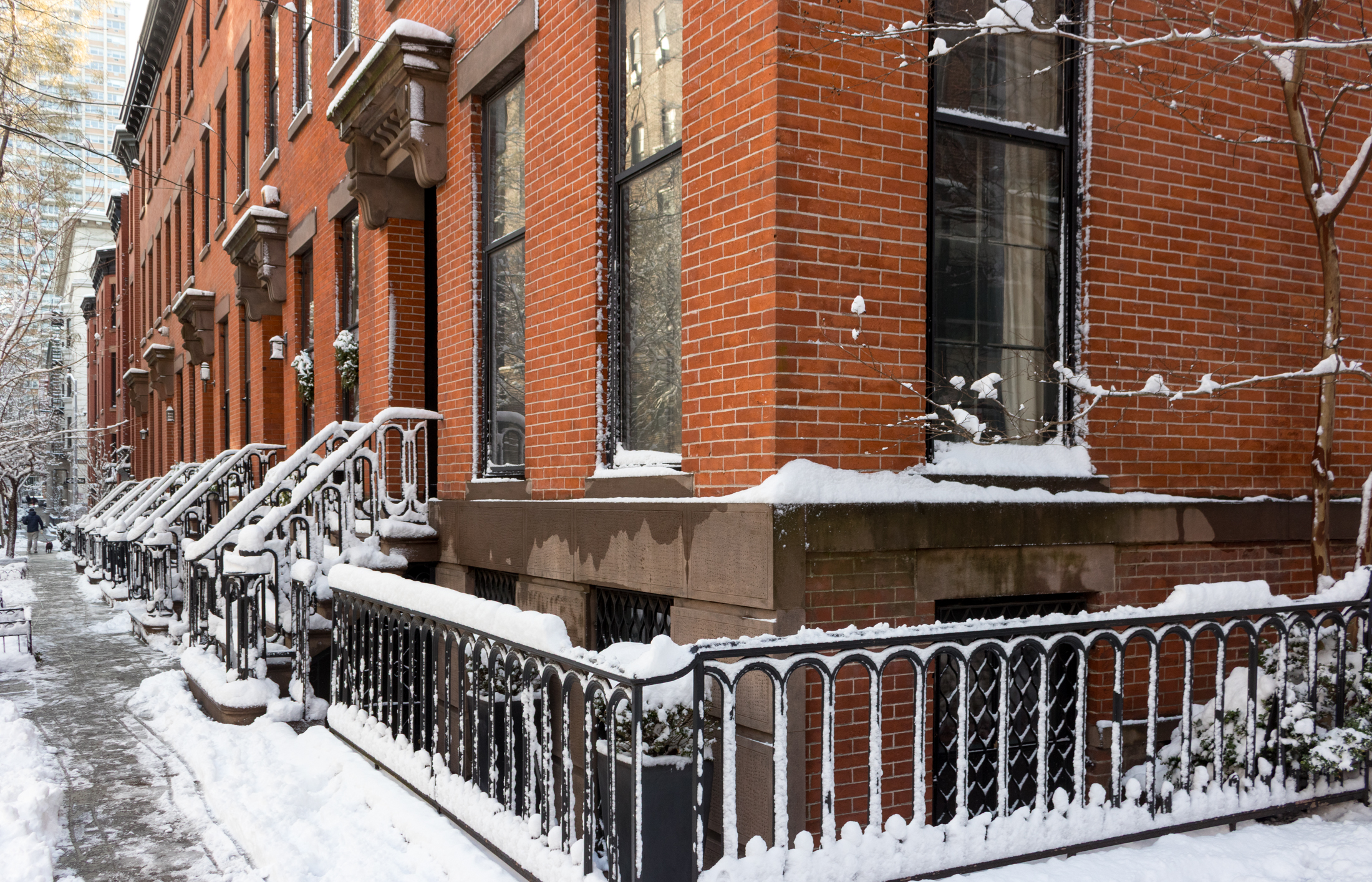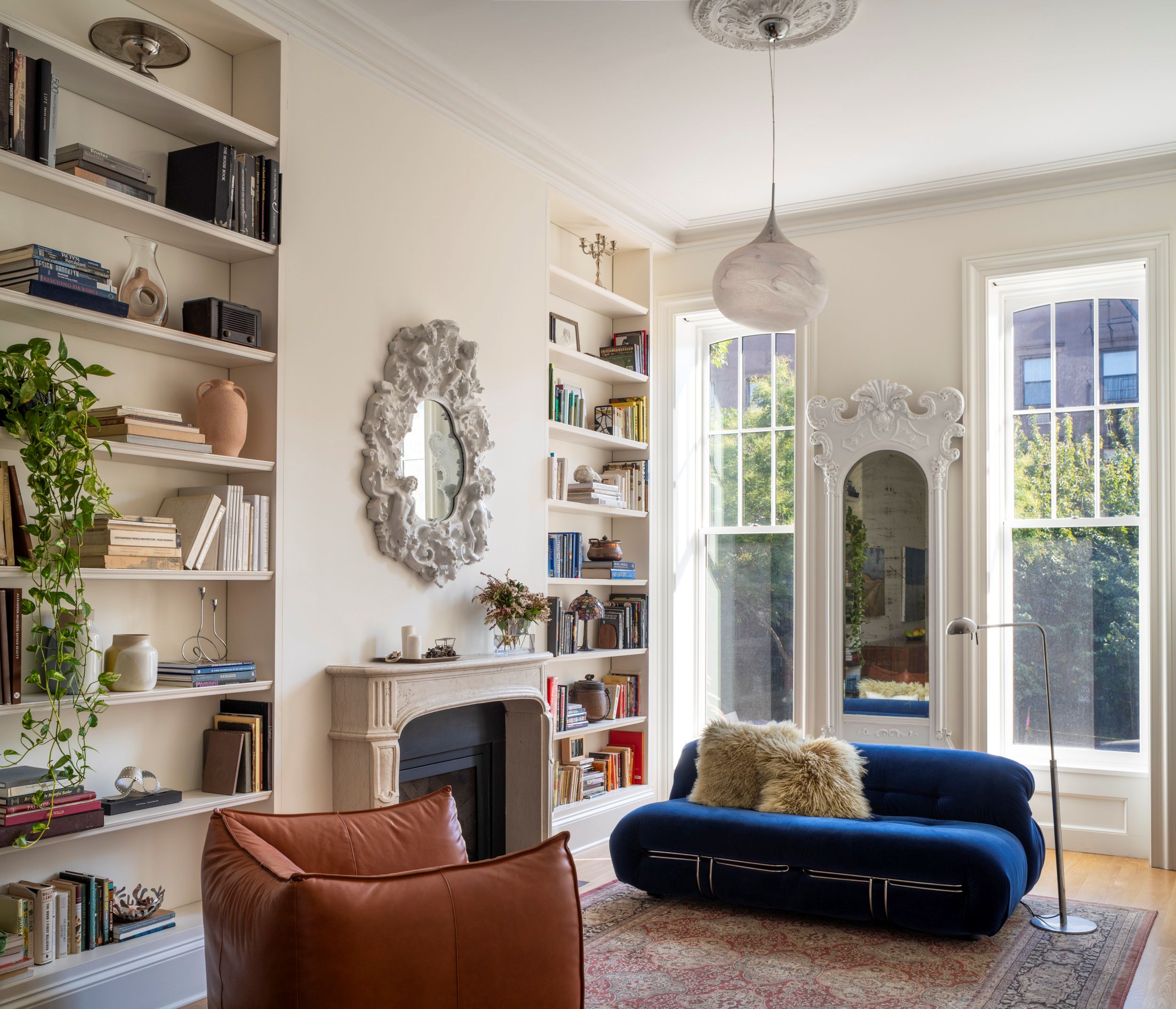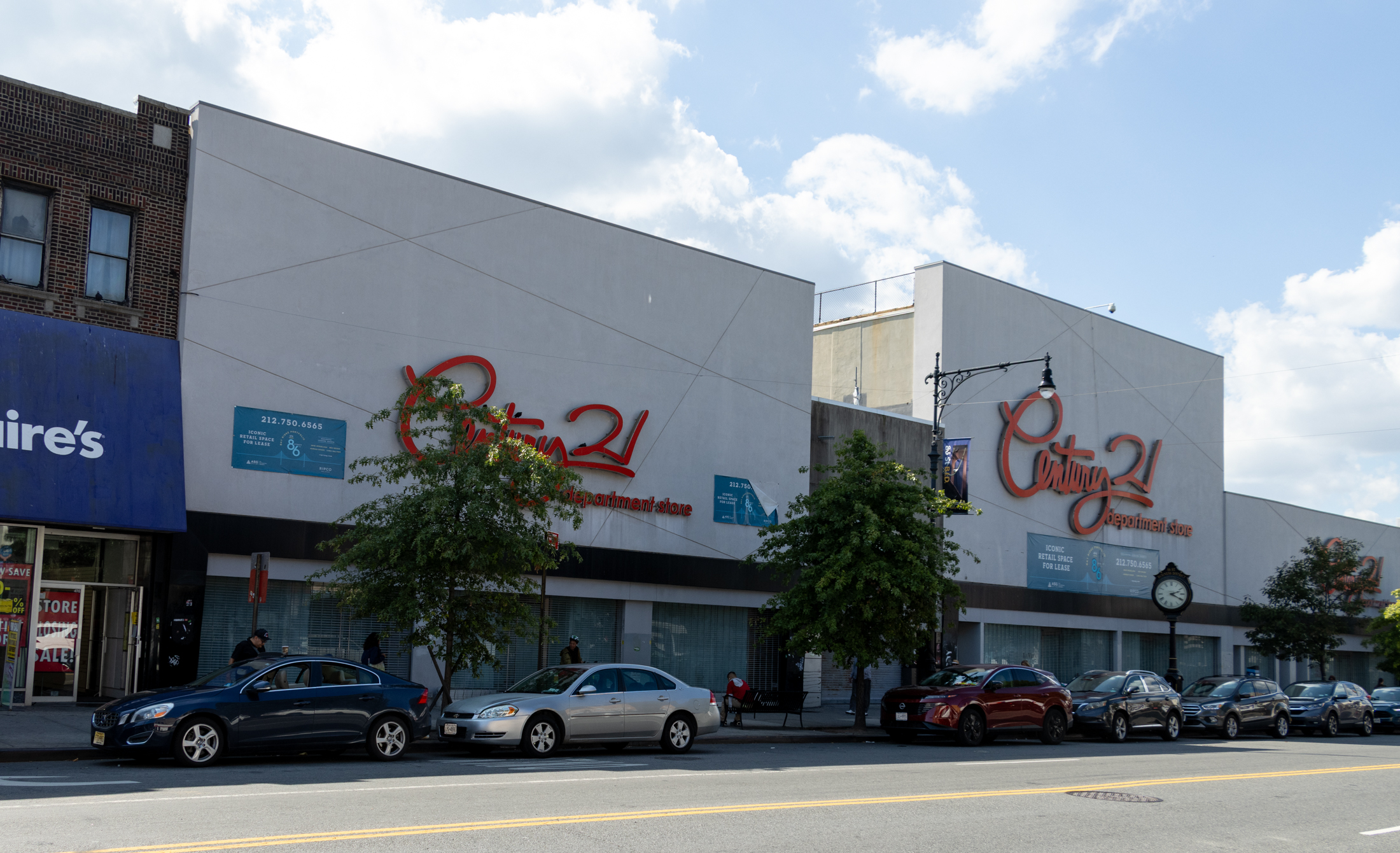Walkabout: Montrose Morris, Part 2 -- the Commissions Cometh
This is the second installment of the life and career of Montrose Morris, the first subject in an ongoing series of biographies of the best of Brownstone Brooklyn’s late 19th c. architects. Read the first post here, and then Part 3, Part 4 and Part 5. One of the many people who toured Montrose Morris’…


This is the second installment of the life and career of Montrose Morris, the first subject in an ongoing series of biographies of the best of Brownstone Brooklyn’s late 19th c. architects. Read the first post here, and then Part 3, Part 4 and Part 5.
One of the many people who toured Montrose Morris’ model home on Hancock Street was developer Louis B. Seitz. In 1889, he commissioned Morris to build a new kind of building for the area, an upper class apartment building.
Morris designed the Alhambra, arguably the best of his many apartment buildings. A terra cotta trimmed brick building taking up the entire block front of Nostrand Avenue, between Macon and Halsey, the Alhambra is classic Romanesque Revival Morris.
Here, he echoes his group of houses on Hancock and goes even better, with loggias stretching across the upper stories, elaborate dormered towers, and terra cotta trim joining the disparate parts of the building.

Inside, huge apartments offered the best of single family home living, with gracious appointments, and lavish detail. In spite of strikes by bricklayers, and other delays, the building was a huge success.
Seitz was pleased to offer Morris two more upper class apartment building commissions in Bedford, all three buildings now protected as NYC landmarks, the Renaissance Apartments, also on Nostrand, and the Dakota of Brooklyn, the Imperial Apartments in nearby Grant’s Square, on Bedford and Pacific. (1893).
He also designed the smaller Bedfordshire Apartments next door to the Imperial, in 1892.

His success in these ventures was paying off. Commissions were coming in right and left in the late 1880’s, through the 1990’s.
More apartment buildings were designed, including the Roanoke (originally the San Carlo Hotel) in Fort Greene, the Arlington, on Montague St. in Brooklyn Heights, the Montrose, on State and Hoyt (demolished), and the Lenox and Montauk on St. Mark’s and Flatbush.
Another major commission was the expansion of the St. George Hotel, also in Brooklyn Heights. Morris’s grand tower, festooned with flags, opened in 1890, and still stands today.
The innovative joining of several houses under one roofline at 246-252 Hancock St. inspired developer Joseph Fahys to commission two groups of houses in Clinton Hill.
285-289 and 282-290 DeKalb Avenue, near Waverly, carry the theme of the whole being greater than the parts, both groups appearing to be one large house, with the Montrose trademarks turrets, stained glass windows, Romanesque arches and mixed building materials, tied together with bands of carved Byzantine trim, repeated decorative half columns, and ornamented by cherubic and fantastical faces.

A similar group appears at 855-57 St. Mark’s Avenue in what is now Crown Heights North, a double house, built for two members of the same family.
The houses built in 1892 in limestone and brick, feature a tall turret with a bell shaped roof, second floor loggia, and common decorative elements joining the two. The house also has an elegant two story carriage house in the rear.
Montrose Morris’ most socially important commissions at this time were the huge mansions for the wealthy industrialists he had been courting from the beginning. One was for John Arbuckle, on Clinton Ave, one of Brooklyn’s most prestigious streets.

Arbuckle was known as the Coffee King, and was enormously rich from the sale and distribution of his Yuban coffee, and the ships that carried it. In 1888, Morris designed a large semi-detached red brick and brownstone mansion at 315 Clinton Ave.
It is a beautiful Romanesque Revival mansion with Renaissance detailing. The second story oriel is especially fine, and the attention paid to the side of the house is remarkable. A long porch once ran along the side of the house, but that is gone.
The carriage house at 306-8 Waverly is probably a Morris design, and was the carriage house for the Arbuckle mansion. Morris also designed a mansion further north, at 181 Clinton, near Willoughby, for a Standard Oil executive, but that house was torn down, along with several others, during WWII, for the Willoughby Houses.
Still standing, however, are his houses at 184-88 Clinton, built in 1892. See these buildings on my Flickr page.
Next week: the concluding chapters; Montrose Morris, developer and social lion, some disappointments, his Park Slope masterpieces, a change in architectural style, and his mark on Brooklyn.
[Photos by Suzanne Spellen]





The first time I saw the Alhambra it was a partially roofless ruin.
I thought: too bad, that building is toast. But lo and behold, by some miracle, it was restored and restored very nicely on the outside.
The apartment I saw in the Arlington was sold. I saw it almost a year ago. I’m trying to remember if it was ever a COTD. It may have been.
Thanks for the complements, all. They make all the work worth it.
Dave, I know exactly what you mean. The first day I came to Bed Stuy to look at the house we ended up living in for 17 years, the Alhambra was the first building I saw coming up out of the subway. I knew this was the community for me. This was pre-renovation, and also pre-fire. It was horribly run down, and I could see people walking up and down the fire escapes and balconies in the loggias, like ants in an ant farm. I always wondered what the apts looked like, unfortunately, never found out first hand.
Thanks, Minard. Did the apt sell yet, and are there any pictures on line? I agree, it’s a great building. It also has lots of terra cotta cherubs, which he also really liked. They cavort all over the Arlington, as well as his brick and terra cotta group on Hancock St.
MM – your posts are a joy to read. Thanks for all the detail that goes into them
The Arlington, built in 1887, is now a co-op. The ground floor apartment was for sale recently and I visited it and the layout, floors, trim and mantlepiece all seemed to be historic. The Arlington has a signature Montrose Morris turret as well as many other bells and whistles. It is a wonderful early skyscraper.
Very cool, MM.
Can’t wait to learn of his Park Slope masterpieces, in next week’s column!
MM, will see what I can manage. A neighbor is friendly with some folks over there, he’s one of the carpenters/performers for the hallowen extravaganza.
Hey MM just wanted to say you are one awesome writer…really love this series on the real MM 🙂 Thank you so much.
That John Arbuckle house is simply stunning!
DeLepp, next time you are over there, please take some hallway pix. I’m trying to collect interior shots, but my connections aren’t that good. I’ve only been in a couple, some long ago, before I had ever heard of MM, and most people seem to have a problem with strangers gushing over their houses and wanting to take photos. Imagine. 🙂